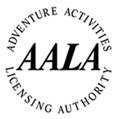There is a lot to know when buying a harness, so hopefully we can walk you through most of it and ensure you’re happy with what you buy!
Here at Rock and Rapid we offer an array of Harnesses to suit everyone. We offer:
From Petzl
- Corax Climbing Kit – Harness/ Karabiner/ belay-rappel device/ Chalk bag/ Chalkball
- Corax Harness
- Adjama – Men’s with adjustable leg loops
- Luna – Women’s with adjustable leg loops
- Macchu Children’s sit harness
From the DMM range
- Renegade 2
- Viper 2
- Vixen
- Mithril
- Tomcat for Children
Our instructors can offer you expert advice on which Harness would best suit the type of climbing you do, and for your comfort.
So, to begin with, it’s important to know that harnesses bought in the UK should meet certain security standards.
- EN 813 is the mandatory standard for harnesses
- EN361 being specifically for Full Body harnesses
Now that’s out of the way, we can get into the fitting of the harness.
Your harness should be comfortable and well fitting. It should be easy to walk around in and cause no rubbing, discomfort or major restrictions. It’s also important to make sure the buckles don’t dig in when you are sitting down. A poorly fitting harness cannot only be uncomfortable but also potentially dangerous.
There are 2 main elements to the harness; firstly we will talk about the waist belt.
Every waist belt will have gear loops connected to it for storing your quick draws, karabiners, chalk bag and other equipment. They are attached with a strap that needs to be ‘double backed’ to be secure and to make sure it doesn’t come undone.
In terms of fitting, the waist belt should be loose enough that you can slip a couple fingers between you and the harness but not much more. Harnesses that are too loose tend to ride up when you’re hanging and if it is too tight it will be uncomfortable when standing or walking around. A waist belt that fits well will ensure that the belay loop and gear loops are centered. The space between the belay loop and the front gear loops should ideally be equidistant. The waist belt should settle just above your hipbones and should not be able to be pulled down over your hips. If you have narrow hips, a full body harness is better.
The second element of the harness is the leg loops, which can come in two different formats, adjustable and non-adjustable.
Adjustable leg loops are ideal for mountaineering where you may need to wear everything from shorts to insulated trousers. If you need to put the harness on while wearing skis, crampons or snowshoes the adjustable legs make things much less fraught.
Non-adjustable leg loops are better suited to sport climbing and alpine routes where every gram counts because they give you 2 less buckles to deal with and so are slightly lighter. They’re flexible enough to accommodate everything from shorts to jeans or softshell trousers.
You should ensure that your leg loops are secure, but not overly restrictive so you can release your legs if necessary; the loops should compromise between not being able to slide around, without hindering your movement.
There are so many different types of harnesses, how can you decide which is best for the type of climbing you do?Below are the 3 overviews of harness you will come across, each tailored for your choice depending on your sex, age and confidence as a climber
- The sit harness is the most flexible and the most common type. This allows you to sit in the harness and hang. The gravitational pull means you sit in a comfortable position. The spine is unloaded, and you have plenty of freedom on the legs for movement.
- A chest harness is another common harness with children and those with smaller hips. This stops any scary ‘slipping’ out of the loops and keeps your body in an upright position so you won’t wobble or tip over. You should combine a chest with a sit harness.
- A full body harness is usually better suited for children and narrow hipped adults as they strap you in not only at the legs but also at the shoulders. They are less comfortable than separate seat and chest harnesses as they are more restrictive, however this can be seen as a positive feature for anyone less secure or confident on the ropes.
Next we can go through a few specific types of harnesses, each tailored for a particular type of climbing, to make your choice easier.
Sport or gym harnesses –
- Single automatic or double–back waistbelt buckle so they are quick and easy to get on and off.
- 2 gear loops – Only 2 since minimal gear is needed.
- A thin belay loop to save on weight.
- Many have minimal or no adjustment buckles on the leg loops to save weight.
Traditional (trad) harnesses –
- Adjustable leg loops with buckles.
- 4 or more gear loops designed to hold lots of gear.
- Thick and durable padding to increase comfort when spending a long time in the harness.
- Extra lumbar padding helps to stabilize the lower back and waist.
- A haul loop for carrying up a second rope.
Ice and mixed harnesses –
- Adjustable leg loops using buckles so they are fully adjustable to fit over winter clothing.
- 4 or more gear loops designed to hold winter gear such as ice screws and ice tools.
- 1 to 2 clipper slots allow for the attachment of ice clippers to hold screws and tools.
- Extra lumbar padding helps to stabilize the lower back and waist.
- And a Haul loop for carrying up a second rope.
Alpine/mountaineering harnesses –
- Fully adjustable leg loops and waistbelt.
- 4 or fewer gear loops for carrying a minimal amount of gear that won’t interfere with a pack.
- Thin material designed to be worn easily with a pack and creates a smaller and more packable harness that might not necessarily be worn the entire day.
- Thin belay loop saves weight; on some models, it is even completely removed from the harness, and one must belay/rappel from the waistbelt and leg loop.
- A haul loop for carrying up a second rope.
Care and Maintenance
As your harness is the critical connection between you and all other components of your climbing system – rope, gear, belay etc. – it is important to keep your harness in good condition and when possible, away from harmful elements such as chemicals and direct sunlight. When in storage keep your harness at room temperature in a dark place and ensure it is dry before being put away. If your harness becomes overly dirty or is exposed to sea water/spray, wash it in lukewarm water with a product such as Nikwax Tech Wash or Beal Rope Cleaner. Dry the harness in a warm (not hot) room away from direct sunlight.







